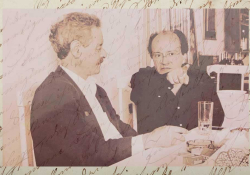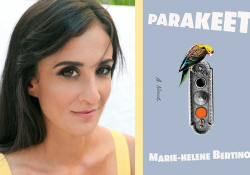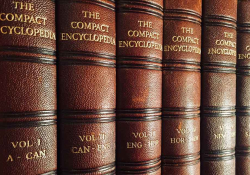His Poems Are His Promises to Return: Remembering Kedarnath Singh

Editor’s note: Three of Kedarnath Singh’s poems, translated into English by Kalpna Singh-Chitnis, appeared on the WLT blog in 2017.
Distinguished Indian poet, essayist, and critic Kedarnath Singh, born on July 7, 1934, passed away on March 19, 2018, after a brief illness in New Delhi. He was one of the most influential and celebrated Hindi poets who revolutionized modern Hindi poetry without carrying attacks on its traditional values.
What made Kedarnath Singh one of the most popular and loved poets was his simplicity. He was a poet deeply connected to his roots and always used simple language in his writings. He wrote about the beauty and complexities of life, the struggle of ordinary people, and became one of the most read and admired Hindi poets.
Born in Chakia, a small village of the Balia District in northern India, Kedarnath Singh received his early education at local schools and higher education in Banaras. He received an MA degree in Hindi language and literature from Banaras Hindu University in 1956 and a PhD based on his dissertation, The Usages of Imagery in Modern Hindi Poetry (Aadhunik Hindi Kavita Main Bimb Vidhan), in 1964. He taught literature as a college professor in Banaras, Gorakhpur, Padrauna, and Jawaharlal Nehru University in New Delhi. For a brief period of time, he was also associated with Hamari Pidhi (Our Generation), a journal published from Varanasi.
He was one of the seven poets of Teesra Saptak (Third Heptad), curated and edited by Agyeya. The publication of Taar Saptak (First Heptad) was followed by the Second Heptad and Third Heptad, published between 1943 and 1959. It was the starting point of modern Hindi poetry and the beginning of an era of experimentalism. This was also a turning point for poet Kedarnath Singh. Later, he wrote a poem called “Nai Hindi Kavi Ka Dukh” (The Sorrow of a New Hindi Poet) that points toward the waves of changes and challenges new Hindi poets were facing at that time. He wrote, “I’m the sorrow of a new Hindi poet / restrain me / confine me /. . . the sky is limited and the air is insufficient / the hatred is silent and love is lonely.”
Kedarnath was influenced by Hindi poets like Nirala, Nagarjuna, Trilochan Shashtri, Agayeya, and Muktibodh. He also created close bonds with veteran Hindi critic Namwar Singh and gave credit to Hazariprasad Dwivedi for mentoring him. Kedarnath Singh’s major works include his poetry collections Abhi Bilkul Abhi, Zameen Pak Rahi Hai, Yahan se Dekho, Akaal mein Saaras, Baagh, Tolstoy aur Cycle, and Srishti Par Pahra. His other scholarly books include Mere Samay ke Shabd, Kalpana aur Chhayavad, Hindi Kavita mein Bimb Vidhan, Kabristan mein Panchayat, and others.
Kedarnath Singh received India’s highest literary honor, the Jananpith Award, in 2014, and the Sahitya Academy Award in 1989 for his poetry collection Akaal Mein Saras (Cranes in a Drought). He was also the recipient of the Kumaran Aashan and Vyas awards. He traveled worldwide to speak at many international conferences, and his poems were translated into many languages.
Kedarnath Singh was a poet of the earth and sky, towns and villages. He saw the ironies of life, ups and downs, love and sorrow, and the fast-changing scene of Indian democracy challenged by new political movements. When the Naxalbari leftist movement (an armed peasant movement that started in West Bengal) rattled the country, he understood the aspirations of underprivileged people, and his writing slowly started to lean toward the left. But Kedarnath Singh always remained a poet of optimism. In his poem “Srishti Par Pahra” (Defending the Universe), he writes, “Wearing the wobbly wooden sandals of roots / it was standing before me / guarding the border, . . . a tall, huge, desiccated tree / with only a few leaves left / waving on the top. How magnificent it was to view / on the very top of a dwindling tree / the swaying of the leaves. / In a severe drought / they were there / defending the universe.” Similarly, in his poem “Grass,” he writes: “She is a gypsy / driven from all the cities in the world / now looking for its lost name and place / in the dust of your town. / . . . She is an obstinacy to rise / from anywhere, / anytime (“Shristi Par Pahra” – “Defending the Universe”).
Kedarnath Singh came from a peasant family, and no matter where he went, he carried his village in his heart, his mother tongue Bhojpuri on his lips, and the Siyahi (ink) of Hindi in his pen to write all that mattered to him, which brought authenticity to his work.
Kedarnath Singh was perhaps the only poet of Hindi who penned a number of poems on words and languages. His poems “Hindi, Bhojpuri,” “Desh aur Ghar,” “Shabd,” “Naye Kavi Ka Dukh,” “Aawaaz,” and “Mahanagar Main Kavi” provide only a few examples of his works on these subjects. In his poem “Desh aur Ghar” (Country and Home), he says: “Hindi is my country / Bhojpuri is my home / I love both of them, / but look at my difficulty, / I have been looking for both / at both these places / for the past sixty years.” But he was against politicizing languages. In his poem “Hindi,” he declares: “A language cannot be a state language / let a language be a language only, / Arabic, Turkish, Bangla, Telugu, / even the sound of a swaying leaf . . .”
Kedarnath Singh came from a peasant family, and no matter where he went, he carried his village in his heart, his mother tongue Bhojpuri on his lips, and the Siyahi (ink) of Hindi in his pen to write all that mattered to him, which brought authenticity to his work. He prided in calling himself a Purbiha (Man of the East) but remained universal and timeless in his expressions.
To understand Kedarnath’s poems, it is important to understand him as a person. It was a privilege to know him personally, when I was only an upcoming poet in India. He wrote a blurb for my poetry collection Tafteesh Jari Hai (The Investigation Continues), in 1992, and his poems deeply influenced my writing in the years to come. And although he had never formally been my mentor or teacher, a quarter-century later the opportunity to translate his poems into English in the US was like paying him my “Guru Dakshina” (an Indian custom of offering an honorarium to one’s teacher). As I was fortunate enough to learn many things from him, that made our distance irrelevant.
Translating Kedarnath’s poems, with the blessings of the poet, has been a huge privilege. It was something meant to be. When I started Life and Legends in 2014 and began to look for his translated work in English, I realized that there was a great need of good translations of his poems for the world to know the exceptional poet he was. Translating his poems can be both easy and difficult, as he does not hide behind scholarly statements and ornamental language in his poetry. But since we both shared a common background, spoke the same language at home, and wrote in Hindi, his poems have always spoken to me in a way one has a conversation with a family member or someone near.
While translating Kedarnath’s poems, I had the rare opportunity to discuss his poems with him over the phone and learn about the poet’s work in his own words. During those conversations, it was fascinating to learn that even in his eighties, Kedarnath Singh was still fit and full of energy. Many times when I called to speak to him, he was either in his village or traveling to attend some literary conference. His passing is a huge loss for Hindi, as he was still actively writing and looking forward to publishing his new poetry collection, Matdaan Kendra Main Jhapki (Snooze at the Polling Center), in just a few months with Rajkamal Prakashan, publisher of his many books.
The last poem I discussed with Kedarnath Singh was “Jaise Diya Siraya Jata Hai” (Cooling the Clay Lamp), from his book Srishti Par Phara (Defending the Universe). He wrote that poem after dedicating his mother’s urn to the Bhagirathi (Ganges) River. Cooling a clay lamp can be seen as a metaphor of immersing a body made of clay that has turned into ashes in the water. In his poem he writes, “I told Bhagirathi / Mother, / take care of my mother, / she only knows Bhojpuri.” Now the same Bhagirathi is taking care of our beloved poet.
Kedarnath Singh has left, but like Banaras, of his iconic poem “Banaras,” he is always going to be half in the water and half in the flowers . . . , but if we look closely, he is not half and still standing there. Now only unaware of his presence that is always going to be in his poetry. Kedarnath’s poems are his promises to return, like the sounds of the seven seas in a seashell in his poem “Bhojpuri.” That seashell now sits at my window, and his poems at my desk, waiting for me to translate.
Bojpuri** – An Indian Language.











